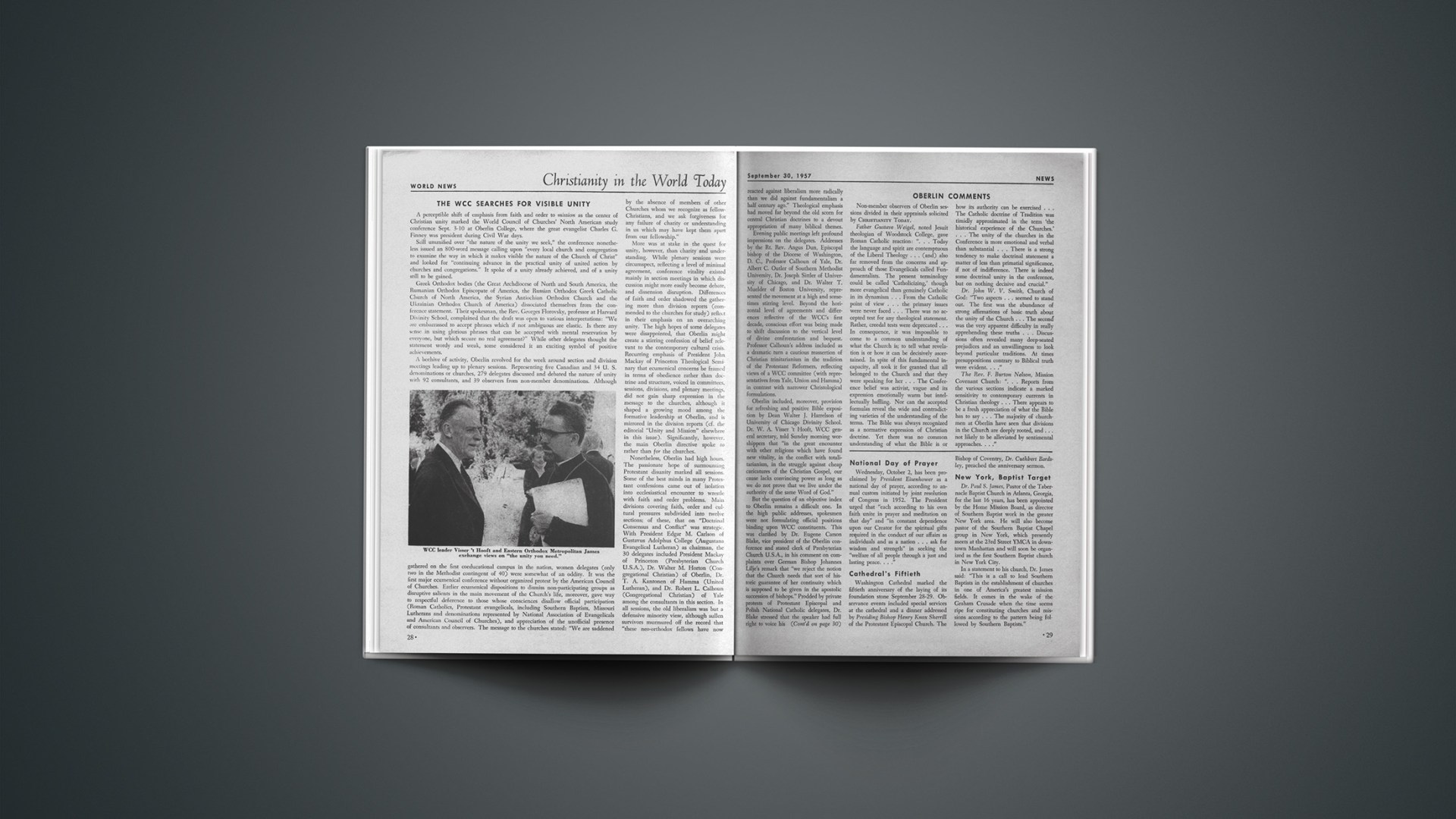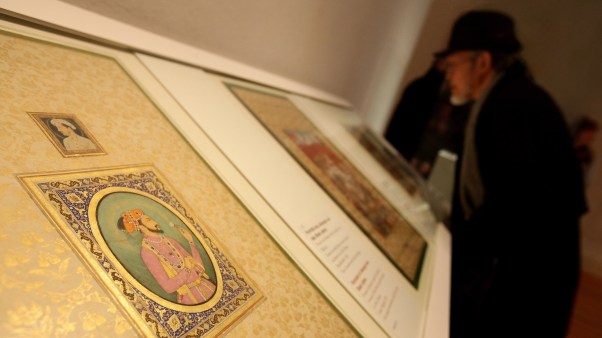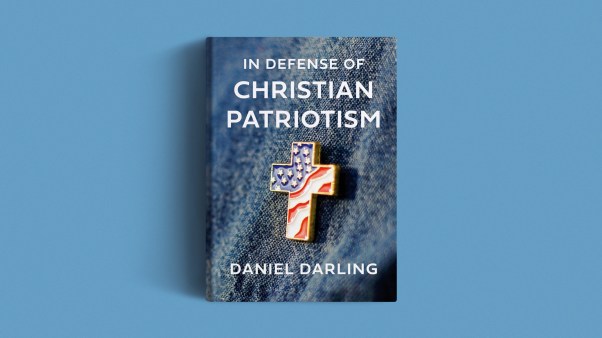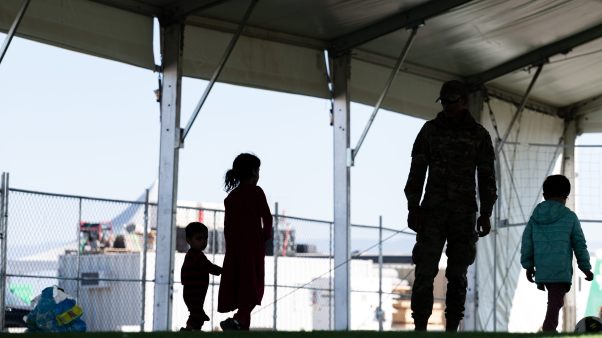WORLD NEWS
Christianity in the World Today
A perceptible shift of emphasis from faith and order to mission as the center of Christian unity marked the World Council of Churches’ North American study conference Sept. 3–10 at Oberlin College, where the great evangelist Charles G. Finney was president during Civil War days.
Still ununified over “the nature of the unity we seek,” the conference nonetheless issued an 800-word message calling upon “every local church and congregation to examine the way in which it makes visible the nature of the Church of Christ” and looked for “continuing advance in the practical unity of united action by churches and congregations.” It spoke of a unity already achieved, and of a unity still to be gained.
Greek Orthodox bodies (the Great Archdiocese of North and South America, the Rumanian Orthodox Episcopate of America, the Russian Orthodox Greek Catholic Church of North America, the Syrian Antiochian Orthodox Church and the Ukrainian Orthodox Church of America) dissociated themselves from the conference statement. Their spokesman, the Rev. Georges Florovsky, professor at Harvard Divinity School, complained that the draft was open to various interpretations: “We are embarrassed to accept phrases which if not ambiguous are elastic. Is there any sense in using glorious phrases that can be accepted with mental reservation by everyone, but which secure no real agreement?” While other delegates thought the statement wordy and weak, some considered it an exciting symbol of positive achievements.
A beehive of activity, Oberlin revolved for the week around section and division meetings leading up to plenary sessions. Representing five Canadian and 34 U. S. denominations or churches, 279 delegates discussed and debated the nature of unity with 92 consultants, and 39 observers from non-member denominations. Although gathered on the first coeducational campus in the nation, women delegates (only two in the Methodist contingent of 40) were somewhat of an oddity. It was the first major ecumenical conference without organized protest by the American Council of Churches. Earlier ecumenical dispositions to dismiss non-participating groups as disruptive salients in the main movement of the Church’s life, moreover, gave way to respectful deference to those whose consciences disallow official participation (Roman Catholics, Protestant evangelicals, including Southern Baptists, Missouri Lutherans and denominations represented by National Association of Evangelicals and American Council of Churches), and appreciation of the unofficial presence of consultants and observers. The message to the churches stated: “We are saddened by the absence of members of other Churches whom we recognize as fellow-Christians, and we ask forgiveness for any failure of charity or understanding in us which may have kept them apart from our fellowship.”
More was at stake in the quest for unity, however, than charity and understanding. While plenary sessions were circumspect, reflecting a level of minimal agreement, conference vitality existed mainly in section meetings in which discussion might more easily become debate, and dissension disruption. Differences of faith and order shadowed the gathering more than division reports (commended to the churches for study) reflect in their emphasis on an overarching unity. The high hopes of some delegates were disappointed, that Oberlin might create a stirring confession of belief relevant to the contemporary cultural crisis. Recurring emphasis of President John Mackay of Princeton Theological Seminary that ecumenical concerns be framed in terms of obedience rather than doctrine and structure, voiced in committees, sessions, divisions, and plenary meetings, did not gain sharp expression in the message to the churches, although it shaped a growing mood among the formative leadership at Oberlin, and is mirrored in the division reports (cf. the editorial “Unity and Mission” elsewhere in this issue): Significantly, however, the main Oberlin directive spoke to rather than for the churches.
Nonetheless, Oberlin had high hours. The passionate hope of surmounting Protestant disunity marked all sessions. Some of the best minds in many Protestant confessions came out of isolation into ecclesiastical encounter to wrestle with faith and order problems. Main divisions covering faith, order and cultural pressures subdivided into twelve sections; of these, that on “Doctrinal Consensus and Conflict” was strategic. With President Edgar M. Carlson of Gustavus Adolphus College (Augustana Evangelical Lutheran) as chairman, the 30 delegates included President Mackav of Princeton (Presbyterian Church U.S.A.), Dr. Walter M. Horton (Congregational Christian) of Oberlin, Dr. T. A. Kantonen of Hamma (United Lutheran), and Dr. Robert L. Calhoun (Congregational Christian) of Yale among the consultants in this section. In all sessions, the old liberalism was but a defensive minority view, although sullen survivors murmured off the record that “these neo-orthodox fellows have now reacted against liberalism more radically than we did against fundamentalism a half century ago.” Theological emphasis had moved far beyond the old scorn for central Christian doctrines to a devout appropriation of many biblical themes.
Evening public meetings left profound impressions on the delegates. Addresses by the Rt. Rev. Angus Dun, Episcopal bishop of the Diocese of Washington, D. C., Professor Calhoun of Yale, Dr. Albert C. Outler of Southern Methodist University, Dr. Joseph Sittler of University of Chicago, and Dr. Walter T. Muelder of Boston University, represented the movement at a high and sometimes stirring level. Beyond the horizontal level of agreements and differences reflective of the WCC’s first decade, conscious effort was being made to shift discussion to the vertical level of divine confrontation and bequest. Professor Calhoun’s address included as a dramatic turn a cautious reassertion of Christian trinitarianism in the tradition of the Protestant Reformers, reflecting views of a WCC committee (with representatives from Yale, Union and Hamma) in contrast with narrower Christological formulations.
Oberlin included, moreover, provision for refreshing and positive Bible exposition by Dean Walter J. Harrelson of University of Chicago Divinity School. Dr. W. A. Visser ’t Hooft, WCC general secretary, told Sunday morning worshippers that “in the great encounter with other religions which have found new vitality, in the conflict with totalitarianism, in the struggle against cheap caricatures of the Christian Gospel, our cause lacks convincing power as long as we do not prove that we live under the authority of the same Word of God.”
But the question of an objective index to Oberlin remains a difficult one. In the high public addresses, spokesmen were not formulating official positions binding upon WCC constituents. This was clarified by Dr. Eugene Carson Blake, vice president of the Oberlin conference and stated clerk of Presbyterian Church U.S.A., in his comment on complaints over German Bishop Johannes Lilje’s remark that “we reject the notion that the Church needs that sort of historic guarantee of her continuity which is supposed to be given in the apostolic succession of bishops.” Prodded by private protests of Protestant Episcopal and Polish National Catholic delegates, Dr. Blake stressed that the speaker had full right to voice his convictions, yet did not commit the conference. Orthodox Bishop Athenagoras, who pronounced the benediction after Bishop Lilje’s sermon the previous night, publicly told the plenary session: “A few more sermons like this … and the ecumenical consciousness is gone.” Public addresses, therefore, were not definitive.
Some delegates considered “the Church at worship” the heart of the ecumenical enterprise, but this too had flutters. Variegated programs of worship and prayer, reflecting Greek Orthodox as well as more familiar Protestant traditions, are now an ecumenical commonplace. But initial announcements of a communion service were clarified to stress optional participation, because the WCC in accord with policy sponsors no such service. Greek Orthodox delegates chose not to exercise their option. Unprotested by participating groups, however, was the Greek Orthodox devotional service including prayers for the dead. Devotional life at Oberlin was no sure index.
Conference leaders spoke, in fact, of a prevalent ecumenical temper more than of the ecumenical mind. It was really an open question whether Oberlin signaled victory for the Great Dane (Kierkegaard) as fully as for the Great Tradition. In the emphasis on the priority of obedience over faith and order, in the phrasing of doctrinal concerns, and in the general formulation of positions, the neo-orthodox approach—although with many shadings—held initiative. Yet leaders were eager to preserve both evangelical and modernist participation in the dialectic. A theory of religious knowledge reflective of modern speculation was frequently evident in the dialectical relating of revelation to reason, in the disregard of coherence as a criterion in religious commitment, in the capitulation of intellectual considerations to a more voluntaristic view of faith, and in invocation of the Bible as relative authority only.
This approach was blessed, in turn, by the tendency of the earlier Lund and Edinburgh conferences to relate study of the nature of the Church directly to the study of the nature of Christ, rather than to an adjustment at doctrinal borders. Taken as doctrine, the declarations on Christology were diverse and often inadequate, and the trinitarian emphasis did not survive in official reports. Prevailing views were criticized for doing more justice to the humanity than to the deity of Christ, in view of a semi-Arian tendency that affirmed that Jesus is the Christ while refusing to speak of the full deity of the person. While Oberlin bristled, moreover, with appeals to the Word of God, and the emergence of biblical theology was identified as “one of the exciting developments of our time,” the conference deleted from its statement to the churches an insistence that this development “does not constitute a return to … uncritical bibliolatry” because of possible effect upon the laity.
The major lack was Oberlin’s failure to exhibit an unambiguous Protestant principle of authority. The hope for unity, some leaders stressed, lies in the ecumenical movement “studying the Scriptures together,” but the controlling suppositions of such study remained diverse. In Oberlin the weather blew both hot and cold, both wet and dry. Religious journalists, some fresh from the Madison Square Garden phenomenon, found no revival atmosphere. The notion of a growing unity was more of a feeling than of anything logically demonstrable. This was no unique kairos, no time of decisive change, in the minds and lives of the delegates that could be refracted at the local level. Ecumenical leaders who looked for a breakthrough into the midrange of American life were disappointed. There was a feeling that Oberlin’s conclusions were too much hastened and dictated by the time factor, by the necessity of reflecting sectional and divisional unity for the sake of plenary unanimities. In the one fellowship of Oberlin remained lonely souls—there to bear witness, professing to love the same Lord, yet unconvinced that the message to the churches faithfully reflected their differences.
Greek Orthodox delegates criticized the discussions both at the outset and conclusion as framed from an inadmissible viewpoint that the unity of the Church has been lost and needs recovery, instead of permanently characterizing the body of Christ. They publicly pointed to the Eastern Orthodox Church as its visible and historical expression: “Since Pentecost she has possessed the true unity intended by Christ … She has been unassociated with the events related to the breakdown of religious unity in the West.” Insisting that the Orthodox Church has kept the integrity both “of the apostolic faith and of the apostolic order,” her delegates lamented the deletion from the program of “the most vital problem of ministry and that of the Apostolic Succession, without which … there is neither unity nor church.” Before the week ended, German Lutheran Bishop Johannes Lilje remarked in a sermon that “Protestantism which is so frequently blamed for having sown the seed of disunity within Christendom, was neither the first nor the greatest schism which Rome had to suffer; the great schism of 1054 (900 years before Evanston) separated … the Eastern church from its Latin lord.”
Orthodox delegates justified WCC membership under the category of “witness.” [Roman Catholic spokesmen, off the record, say that the Greek Orthodox Church has no business in the WCC, but are nonetheless glad she is in, because Orthodox leaders “say many things we would say.”] Although officially distributed, the Orthodox statement was largely ignored until a Jesuit observer asked the section on doctrine why there was no comment on it. The Greek Orthodox delegate promptly gave answer: his church’s claim to be the Una Sancta is avoided as an unpleasantry in the Protestant search for unity (which supposes that none of its members has given adequate expression to all the truth), yet for having invited the Eastern Orthodox Church into the WCC, Protestantism must pay the price of hearing that claim. “Sometimes we Orthodox feel much out of place, and even wonder whether we speak the same language,” he added, “but we value the Protestant search for unity, and bear witness in it; if we were to withdraw, the WCC would become simply a pan-Protestant endeavor.”
In his opening address Bishop Dun took note of misgivings produced by the conference title. But it did not necessarily exclude, he said, a given spiritual unity among believers, nor imply such division that the one Church must search for and restore its unity, but reflected rather that the Church’s presence is to be acknowledged in other churches, and that others stand outside the unity that is given.
Later named chairman of the plenary sessions, Bishop Dun voiced “the ecumenical sorrow”: “For at least 35 years I have been engaged in such conversations.… If you are like me, you will find, as you meet your brothers and sisters coming out of their own particular households of faith, that you cannot think lightly or contemptuously of what has nurtured them, even though you should not be at home where they are at home. And you will experience afresh the sorrow of realizing that they go back and you go back into households or structures of faith and prayer and allegiance that in many ways separate you from them and fail grievously to make manifest our unity in Christ. This sorrow can turn you into a patient seeker for the household in which we could all be at home.”
Nature Of Ministry
The ministry of Jesus Christ continues in the world today as the Church participates in his ministry. The bourgeois, middle-class churches of America are very imperfect, but nevertheless the true Church is in them. The Church must continually struggle to get its message and forms from the New Testament rather than from the secular culture. The special ministries of the clergy are instrumental and come from the primary unit of the congregation in Christ dwells.
These were some of the emphases of four notable addresses delivered at the Fourth National Triennial Conference of the Inter-Seminary Movement at Oberlin, Ohio (Aug. 27–Sept. 1), at which 500 theological students and professors from 64 seminaries of 23 denominations met to consider “The Nature of the Ministry We Seek.”
Dr. W. A. Visser ’t Hooft, General Secretary of the World Council of Churches, in his keynote address, “Slaves and Spokesmen,” referred to the renewed search for authority in the world today, pointing out that there is no Christianity without accepting the final authority of Jesus Christ, concerning whom the Church must declare, “Thou are the Son of God.” The ministry must be above all else the ministry of the word, the living Word, known only through the Scriptures; “If there is ever to be a theological renaissance in America it will involve the rediscovery of the Greek New Testament.” “Preaching has to do with events, facts, the great reality”; consequently, there is only one kind of valid preaching, expository preaching.
Dr. James I. McCord, Dean, of Austin (Texas) Presbyterian Seminary, speaking on “Flunkies and Soothsayers,” charged that the ministry as we know it in American churches is a luxury the rest of the world cannot afford. He contrasted the typical American ministerial student and minister with a simple-hearted lay-minister who works as a hod carrier all week and ministers evenings and Sundays in poor communities of Latin America. Although not arguing against a trained ministry, he believes the congregation is in the ministry, and deplored the term “layman” which too often implies an incompetent and unskilled person. “It is not the minister who should organize the congregation; it is the congregation which should organize its ministry of preaching, of oversight, and of mercy.” The Church needs to focus less attention on ministerial “orders” and give greater heed “to God’s ordering us within the body of Christ.”
Dr. Paul Lehman of Harvard Divinity School spoke on “Society’s Elite and Christ’s Elect.” In the Old Testament the people who were called as God’s elect assumed this made them society’s elite; they confused their theological terms with sociological ideas. Under the new covenant the Church is constantly in tension between being society’s elite and Christ’s elect. The elite count their blessings, but the elect are troubled by them. The elite want to be seen, but the elect sit with publicans and sinners. The elite are respectable and conforming, but the elect must be non-conforming and challenging to the world order. He showed that the goal of the Christian life is maturity, possible only within the fulness of the Christian community. The congregation “must be the vital center and not the dead center of the church.”
The American theological student today is living “the distracted life,” said Dr. Daniel Day Williams of Union Theological Seminary, New York. Theological education is being blocked, he said, by “too many courses, too many subjects, too many lectures, too many papers, too many selections to be read from too many books, instead of rereading and digesting those that can be mastered only through prolonged attention.” Dr. Williams said the greatest lack in American seminaries is in the field of Christian ethics, dealing with questions of what to do in contemporary situations, on Christian ground. Practical studies in the seminary are important to help the minister continually bring to bear on the life of the Church valid criteria upon which to judge its work; “the theological school is the Church in its most intense and concentrated activities.”
C.A.H.
Oberlin Comments
Non-member observers of Oberlin sessions divided in their appraisals solicited by CHRISTIANITY TODAY.
Father Gustave Weigel, noted Jesuit theologian of Woodstock College, gave Roman Catholic reaction: “… Today the language and spirit are contemptuous of the Liberal Theology … (and) also far removed from the concerns and approach of those Evangelicals called Fundamentalists. The present terminology could be called ‘Catholicizing,’ though more evangelical than genuinely Catholic in its dynamism … From the Catholic point of view … the primary issues were never faced … There was no accepted test for any theological statement. Rather, creedal tests were deprecated … In consequence, it was impossible to come to a common understanding of what the Church is; to tell what revelation is or how it can be decisively ascertained. In spite of this fundamental incapacity, all took it for granted that all belonged to the Church and that they were speaking for her … The Conference belief was activist, vague and its expression emotionally warm but intellectually baffling. Nor can the accepted formulas reveal the wide and contradicting varieties of the understanding of the terms. The Bible was always recognized as a normative expression of Christian doctrine. Yet there was no common understanding of what the Bible is or how its authority can be exercised … The Catholic doctrine of Tradition was timidly approximated in the term ‘the historical experience of the Churches.’ … The unity of the churches in the Conference is more emotional and verbal than substantial … There is a strong tendency to make doctrinal statement a matter of less than primatial significance, if not of indifference. There is indeed some doctrinal unity in the conference, but on nothing decisive and crucial.”
Dr. John W. V. Smith, Church of God: “Two aspects … seemed to stand out. The first was the abundance of strong affirmations of basic truth about the unity of the Church … The second was the very apparent difficulty in really apprehending these truths … Discussions often revealed many deep-seated prejudices and an unwillingness to look beyond particular traditions. At times presuppositions contrary to Biblical truth were evident.…”
The Rev. F. Burton Nelson, Mission Covenant Church: “… Reports from the various sections indicate a marked sensitivity to contemporary currents in Christian theology … There appears to be a fresh appreciation of what the Bible has to say … The majority of churchmen at Oberlin have seen that divisions in the Church are deeply rooted, and … not likely to be alleviated by sentimental approaches.…”
National Day Of Prayer
Wednesday, October 2, has been proclaimed by President Eisenhower as a national day of prayer, according to annual custom initiated by joint resolution of Congress in 1952. The President urged that “each according to his own faith unite in prayer and meditation on that day” and “in constant dependence upon our Creator for the spiritual gifts required in the conduct of our affairs as individuals and as a nation … ask for wisdom and strength” in seeking the “welfare of all people through a just and lasting peace.…”
Cathedral’S Fiftieth
Washington Cathedral marked the fiftieth anniversary of the laying of its foundation stone September 28–29. Observance events included special services at the cathedral and a dinner addressed by Presiding Bishop Henry Knox Sherrill of the Protestant Episcopal Church. The Bishop of Coventry, Dr. Cuthbert Bardsley, preached the anniversary sermon.
New York, Baptist Target
Dr. Paul S. James, Pastor of the Tabernacle Baptist Church in Atlanta, Georgia, for the last 16 years, has been appointed by the Home Mission Board, as director of Southern Baptist work in the greater New York area. He will also become pastor of the Southern Baptist Chapel group in New York, which presently meets at the 23rd Street YMCA in downtown Manhattan and will soon be organized as the first Southern Baptist church in New York City.
In a statement to his church, Dr. James said: “This is a call to lead Southern Baptists in the establishment of churches in one of America’s greatest mission fields. It comes in the wake of the Graham Crusade when the time seems ripe for constituting churches and missions according to the pattern being followed by Southern Baptists.”










